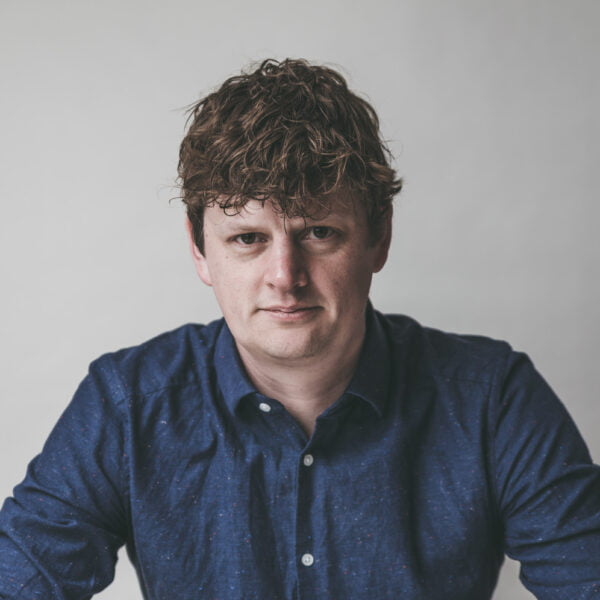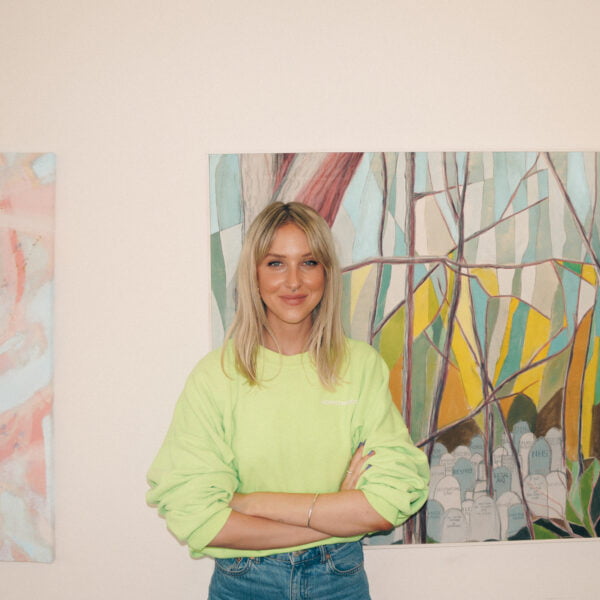
Natasha Collie
Senior Brand Marketing Manager at Penguin Random House UK
At the start of the year, Ladybird Books approached Sonder & Tell with a dream brief. In 2021, a year that’s been particularly challenging for...
In conversation with
Wellbeing and Creativity Coach, Creative and Consultant

Alice is a Wellbeing and Creativity Coach, Creative and Consultant. She’s also a former CoppaFeel! Boobette, part of a team of volunteers all affected by breast cancer in some way between 18–35.
As well as volunteering for CoppaFeel!, she works with them on a professional basis, most recently producing a set of media guidelines for best practices when reporting on breast cancer.
We asked Alice some questions about this project and her wider creative and professional practice.
Hello! So my journey so far is a bit of an abstract one. I did a journalism degree and, after graduating, I worked in marketing at a money-saving website. It was not a job I loved. But then I was diagnosed with breast cancer when I was 26 and everything changed for me, especially my career. I realised I no longer wanted to work full-time in an office (and straight after treatment, I couldn’t because I was so fatigued), so I decided to give being self-employed a go. I worked on marketing projects and as a freelance writer for a while, and I began working with other young people who’d had cancer on creative projects which led to me completing a diploma in transformational coaching so I could pursue work around creativity and wellbeing.
I had breast cancer in 2015 and am a huge language nerd. So when CoppaFeel! approached me to ask if I’d be interested in working with them on a project around the language of breast cancer, I couldn’t say yes fast enough. I was lucky enough to be given a pretty open brief, allowing me to use my experience to take control of the project. I spoke to the team and explained that, while I felt I had some anecdotal evidence around the language people like or dislike when it comes to breast cancer, to make this project as effective as possible, the best approach was to get research from the CoppaFeel! Community.
Working with The 7 Stars, I designed a survey and some focus group approaches, as well as questions for 1:1 in depth interviews. We looked at approaches to personal language, language used in the media and also language approaches to death and end of life. This research was then carried out by The 7 Stars and I turned it into a set of guidelines with a view to helping the media change their approaches to the way they talk about breast cancer, specifically with regards to reaching a younger audience.
There’s so much of the research that was interesting but I think the role the media can play in early detection of breast cancer by changing the language used could have a huge impact. It was also really telling to see the near unanimity around the type of language preferred by the community. So many of those who participated are alienated by military language – which is so often used when discussing cancer. I recently shared details of the project on LinkedIn and it absolutely POPPED off, showing that many outside of those surveyed felt much the same.
One of the biggest things to come out of the research was a reminder of just how important it is to see the human before the cancer. It felt important to look at the language around death. We spoke to those with both primary and secondary breast cancer experiences to gauge the impact language has on them.
More people than ever are surviving breast cancer (80.4% of women diagnosed with breast cancer are predicted to survive for 10 or more years). For every death from breast cancer, there are people living in fear of breast cancer recurrence, secondary breast cancer and dying from the disease. It’s important to tread the line between empowering survivors and sharing the reality of breast-cancer deaths.
The research found that misrepresentation of the cancer experience perpetuates myths, creates unnecessary fear and fails to capture the full experiences of breast cancer. Terminology used by the media is considered to exacerbate this negative portrayal. A more holistic approach to the language used by the media will reduce scaremongering, sensationalism and commercialisation
“Misrepresentation of the cancer experience perpetuates myths, creates unnecessary fear and fails to capture the full experiences of breast cancer. A more holistic approach to the language used by the media will reduce scaremongering, sensationalism and commercialisation”
Some people do feel empowered by the military language that is used around cancer, but as the research shows, many don’t (2 in 3 according to our research). When those in the cancer community see headlines about a celebrity who ‘lost their battle’ with cancer it can feel jarring because it suggests those who died didn’t do everything in their power to survive. The idea of ‘losing’ is inherently negative and doesn’t look at the whole picture – it reduces the person who has died to their cancer and nothing more. Cancer also isn’t a fair ‘fight’. Those who are diagnosed aren’t soldiers or warriors, they’re people who are facing an almost impossible set of circumstances.
In terms of language to use instead, it’s so important to be guided by those from the cancer community and those you’re speaking on behalf of. Realistic, neutral and fact based language is preferred by those who’ve lived through a cancer diagnosis and it’s important to neither deploy scaremongering tactics or downplay the realities of cancer.
Inclusivity is a fundamental value of CoppaFeel! Breast cancer can affect any body and CoppaFeel! exists to educate and remind every young person in the UK that checking their chests could save their life. So making sure to reach all of those young people through inclusive writing is crucial.
Using inclusive language allows messages to resonate with a wider audience. By considering language more carefully, every message is accessible to as many people as possible. Breast cancer can affect people of any gender and we use terms that reflect the diversity of ways people might describe their body. We might use multiple phrases to describe breast tissue, or we might choose one, based upon the intended audience. The only exception to this is when we are using clinical terms, such as ‘breast cancer’ or ‘breast clinic’ (we would not say, for example, ‘chest cancer’).
It’s important to always use person-first language. In relation to breast cancer, you would use “person with breast cancer” rather than “breast cancer patient”. Everyone’s experience of breast cancer is different too, so thinking about this is key for inclusive writing approaches. As an organisation, CoppaFeel! avoid the term ‘survivor’ and adjectives like battling or fighting breast cancer because, as I’ve mentioned, it can be a damaging rhetoric.
Creativity played a huge part in my healing from breast cancer. I wrote about my experience throughout treatment and beyond, and finding a language to explore my experiences was fundamental to my recovery. At first, I thought it was just me, but eventually I realised there was more and more evidence to support the positive impact of creativity on your wellbeing. Research shows having a regular creative practice can forge a “clinically meaningful improvement in wellbeing”.
My work as a wellbeing and creativity coach allows me to share the knowledge I’ve gathered around creativity and wellbeing (also known as creative health) in a psychologically safe way. I also use creativity in all of my coaching practices, so my clients can learn how to use creativity as a tool for their wellbeing.

Senior Brand Marketing Manager at Penguin Random House UK
At the start of the year, Ladybird Books approached Sonder & Tell with a dream brief. In 2021, a year that’s been particularly challenging for...

Founder Of Simple Politics
Talking about serious issues doesn’t mean defaulting into a serious tone of voice, or using complicated language. If anything, accessibility, clarity and a touch of...

Brand & Community Manager at Homethings
Creating a tone of voice from scratch can be challenging. But a blank slate to work from also mean there’s room for something a bit...

Head of Creative at Tony's Chocolonely

Co-founder, Tracksuit